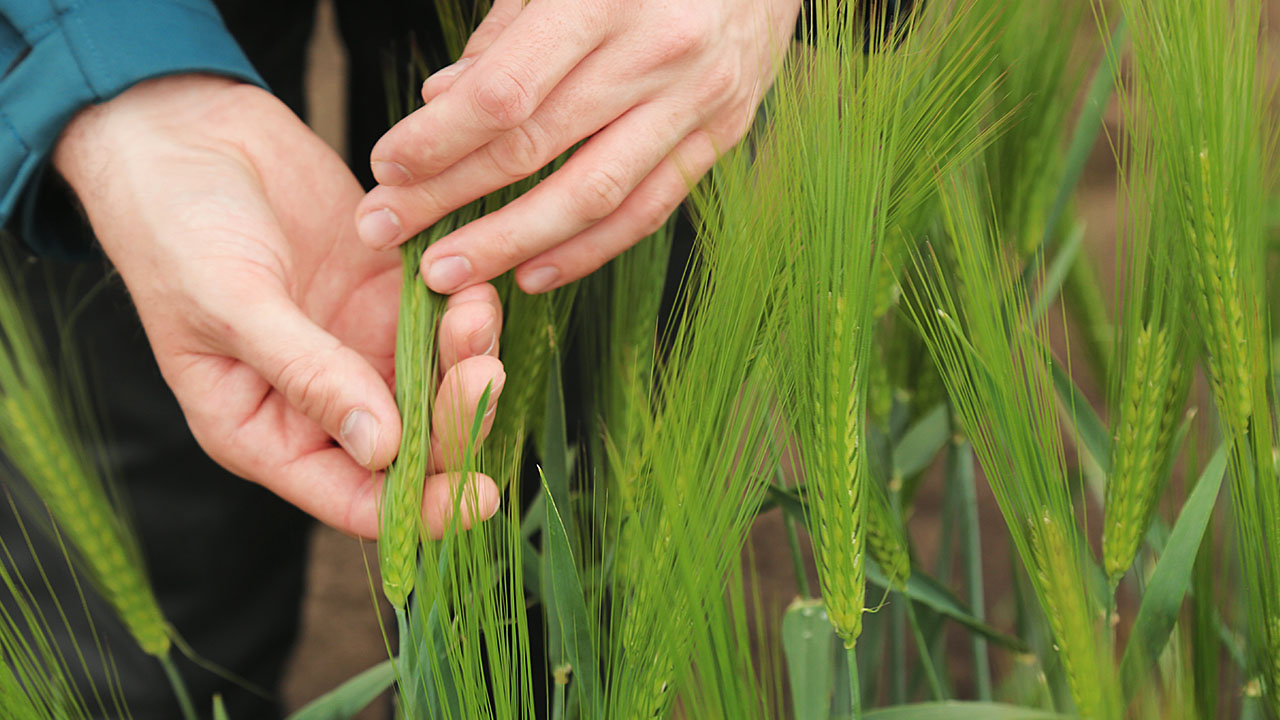Key gene for toxic alkaloid discovered in barley
Many varieties of barley produce a substance called gramine, which is toxic to livestock. Researchers from Hanover and Gatersleben have discovered how the alkaloid is produced in the plant.

Plants mediate their interactions with the environment via chemical signals. One example of this is the alkaloid gramine, which is produced by barley, one of the world's most widely cultivated cereals. Gramine provides protection against herbivorous insects and grazing animals and inhibits the growth of other plants. The toxin is particularly present in the green parts of the plant, such as leaves and stalks, but hardly ever in the grains, which can be safely used for food production. However, eating the green parts of the plant can be toxic to ruminants, which limits the use of barley as animal feed.
Until now, the genetic basis of gramine biosynthesis had not been clarified, so production could not be controlled and this possibility could not be utilised for breeding. Now, research groups from the Leibniz Institute of Plant Genetics and Crop Plant Research (IPK) and Leibniz University Hannover have succeeded in deciphering the complete biosynthetic pathway of gramine. The results have been published in the journal "Science" .
Second key gene for biosynthesis discovered
Despite many years of research, the key gene for the formation of gramine was previously unknown. The researchers have now discovered a cluster of two genes for gramine biosynthesis in barley. The first gene (HvNMT) had already been found 18 years ago. In their study, the team from the IPK and Leibniz University Hannover has now identified a second key gene for biosynthesis. It codes for the enzyme AMI synthase and is located on the same chromosome as HvNMT. This means that the entire metabolic pathway of gramine has now been described.
"We have discovered that AMIS is an oxidase enzyme that carries out an unusual cryptic oxidative rearrangement of tryptophan. This allows us to revise the previous theory of gramine biosynthesis from the 1960s," says John D'Auria, head of the IPK Metabolic Diversity research group. Jakob Franke, head of the Biochemistry of Secondary Plant Compounds research group at Leibniz University Hannover, adds: "We were very surprised by the previously unknown enzyme mechanism by which gramine is formed. At the same time, this now opens up the possibility of producing biologically active alkaloids using sustainable biotechnological methods."
Gramine produced in yeast and model plants
The researchers were thus able to produce gramine in yeast and model plants (Nicotiana benthamiana, Arabidopsis thaliana). "Unlike many other plant defences, only two genes are required to produce gramine. This makes it relatively easy to put our findings to practical use," emphasises Ling Chuang from Leibniz University. "In addition, we have also succeeded in producing gramine in a non-gramine-producing barley variety through genetic modification and, conversely, in preventing gramine production in a gramine-producing barley variety through genome editing," says Sara Leite Dias from the International Max Planck Research School, a scientist funded by the IPK. Robert Hoffie, who was featured on bioökonomie.de in the "Biopioneers" portrait series , was also involved in the study.
"The results enable the production of gramine in organisms that do not actually have the ability to synthesise it themselves," explains John D'Auria. "Conversely, gramine can now be eliminated from barley and other grasses to reduce toxicity to ruminants," says the IPK scientist. "All in all, the results form the basis for improving barley in order to further increase its resistance to pests in the future, reduce its toxicity to ruminants and contribute to sustainable weed control."
pg


